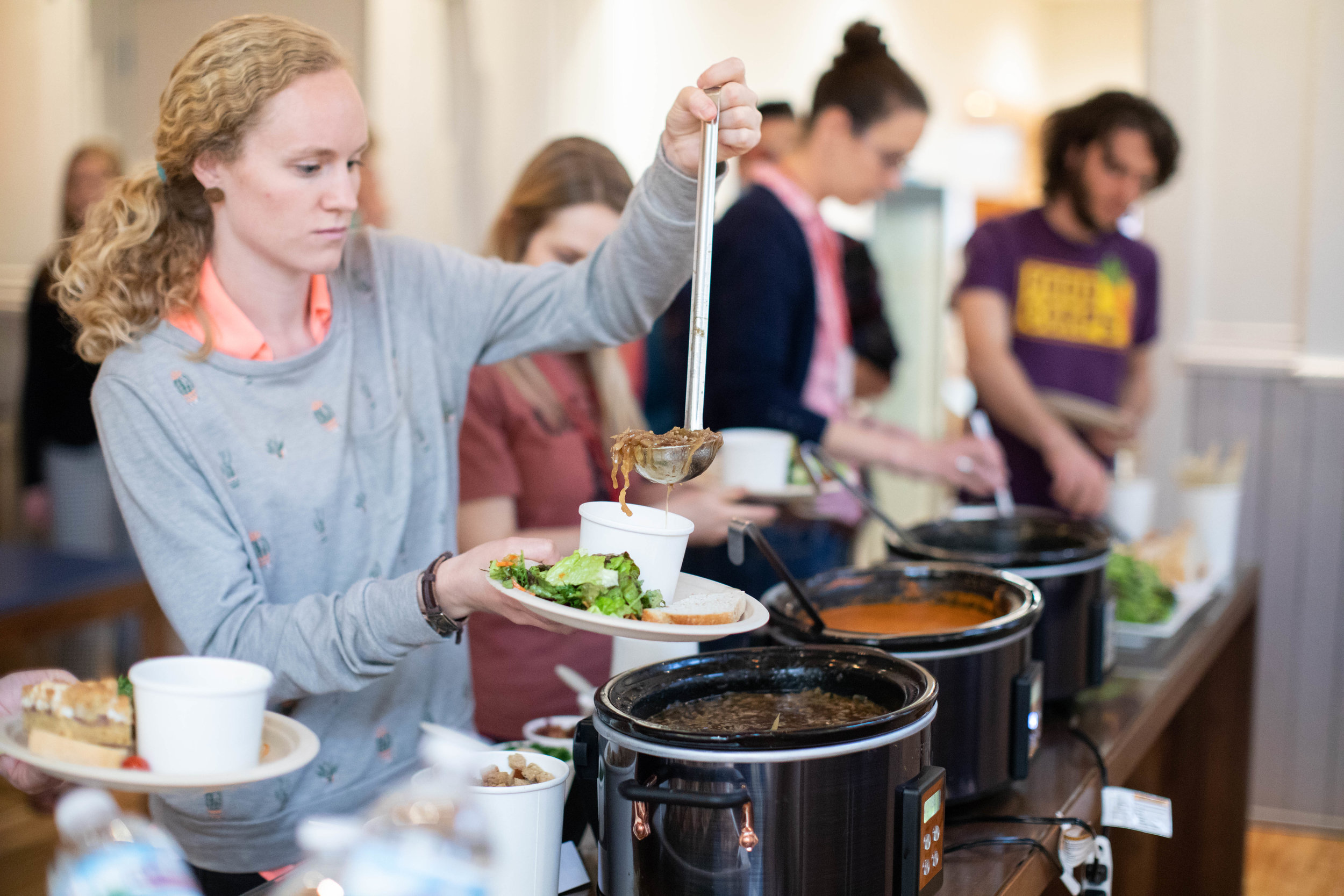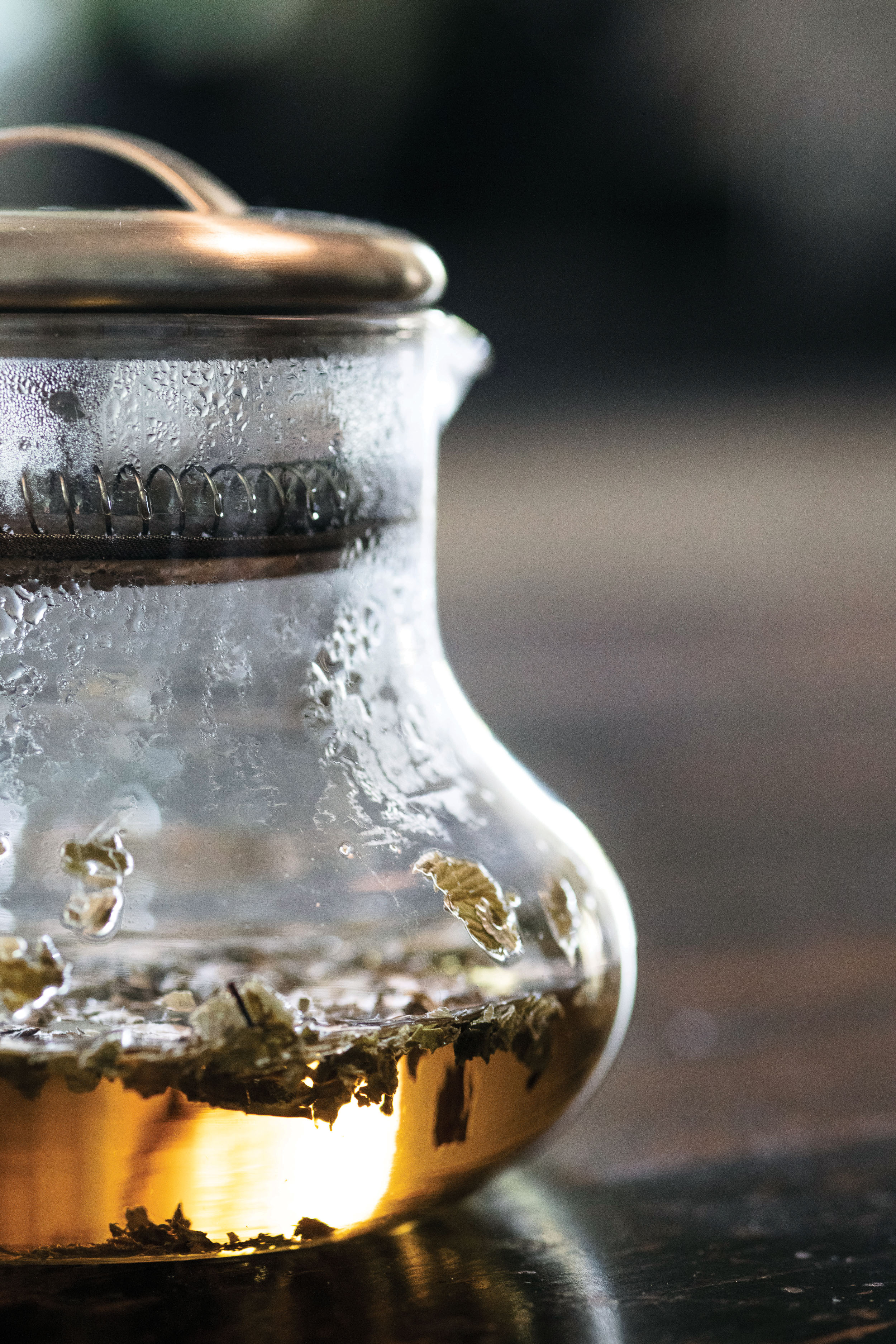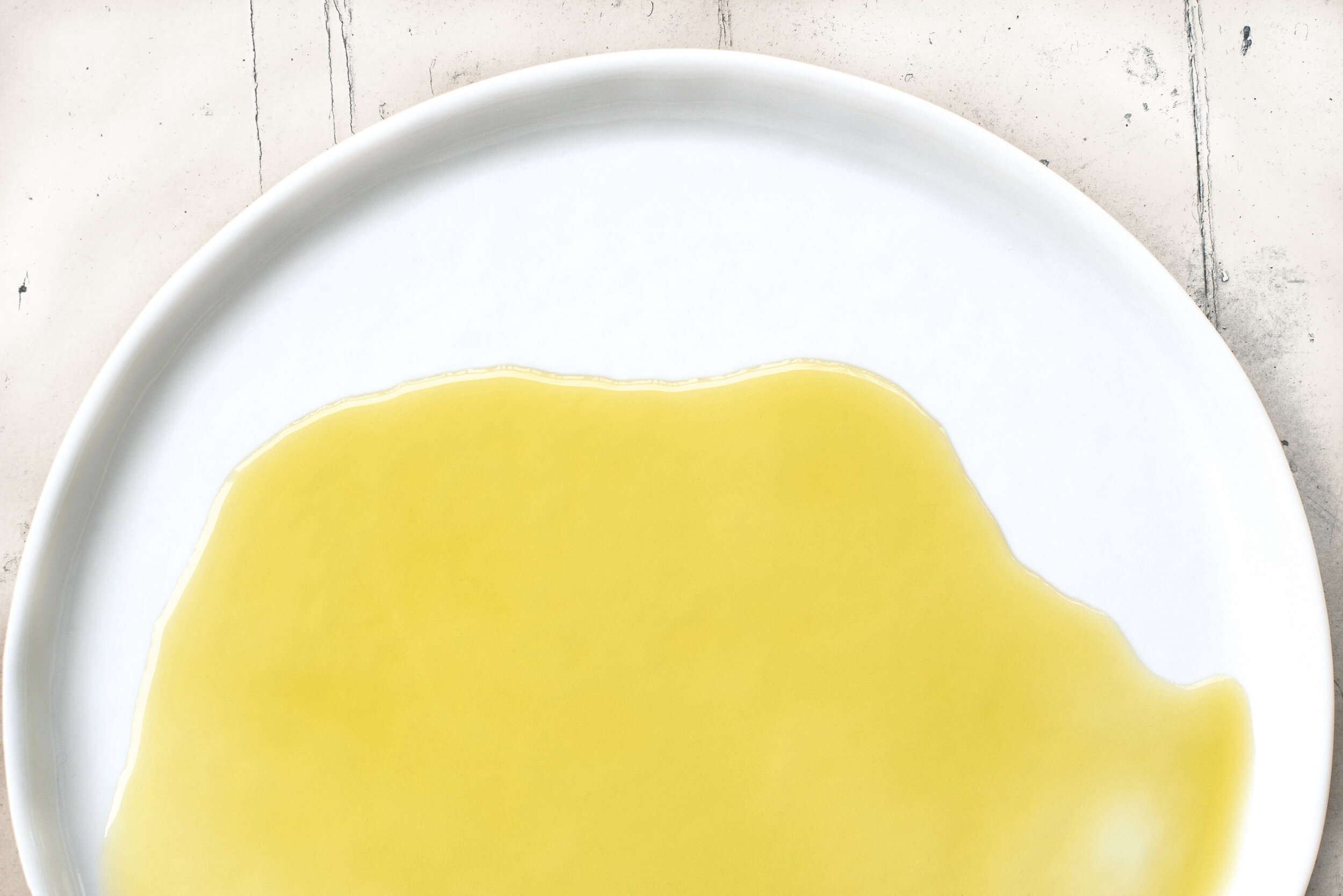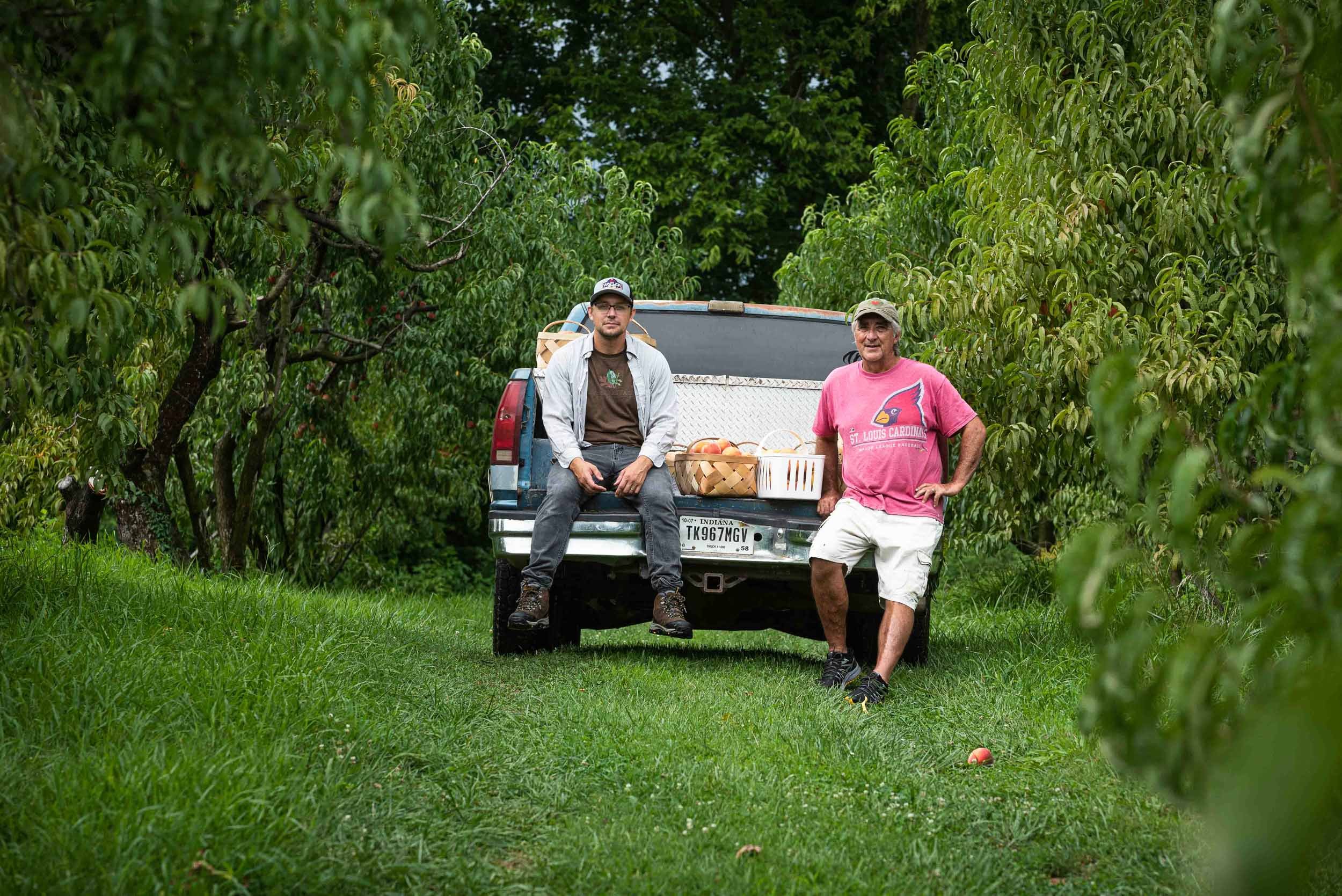Good Grounds

Our climate is incompatible with growing coffee. So local roasters go to great lengths to bring you that morning cup.
Photography by Jamie Stoneham
For all the progress the eat-local movement has made, it will never be able to provide us with one essential daily fix: coffee. Coffee trees need high altitudes and a tropical climate to produce beans worth roasting and brewing. Outside of Hawaii, the U.S. climate won’t support them, let alone the Ohio Valley’s wild temperature swings and clay soils.
Even so, the U.S. is the world’s largest coffee-consuming country, so our buying habits can affect farmers throughout the coffee belt. While most of us can’t meet those far-flung farmers who grow our coffee, we are lucky to have a group of passionate coffee roasters who are bridging that gap for us.
These local entrepreneurs purchase raw, unprocessed “green” coffee beans, ship them to our region, and roast them in their own facilities. Beans from different countries (even regions or specific farms) have different flavor profiles, which are enhanced in a skilled roaster’s hands.
In their search to bring high-quality coffee to our area, they have built relationships with farmers and importers, and work closely with them to source coffee in sustainable ways.
“We want to make sure the coffee we find is really good,” says Tony Tausch, who owns Coffee Emporium and roasts 80,000 pounds of coffee a year in his Over-the-Rhine roasterie. “We’re also looking for people who are working in such a way that they’ll be there next year and the year after.”
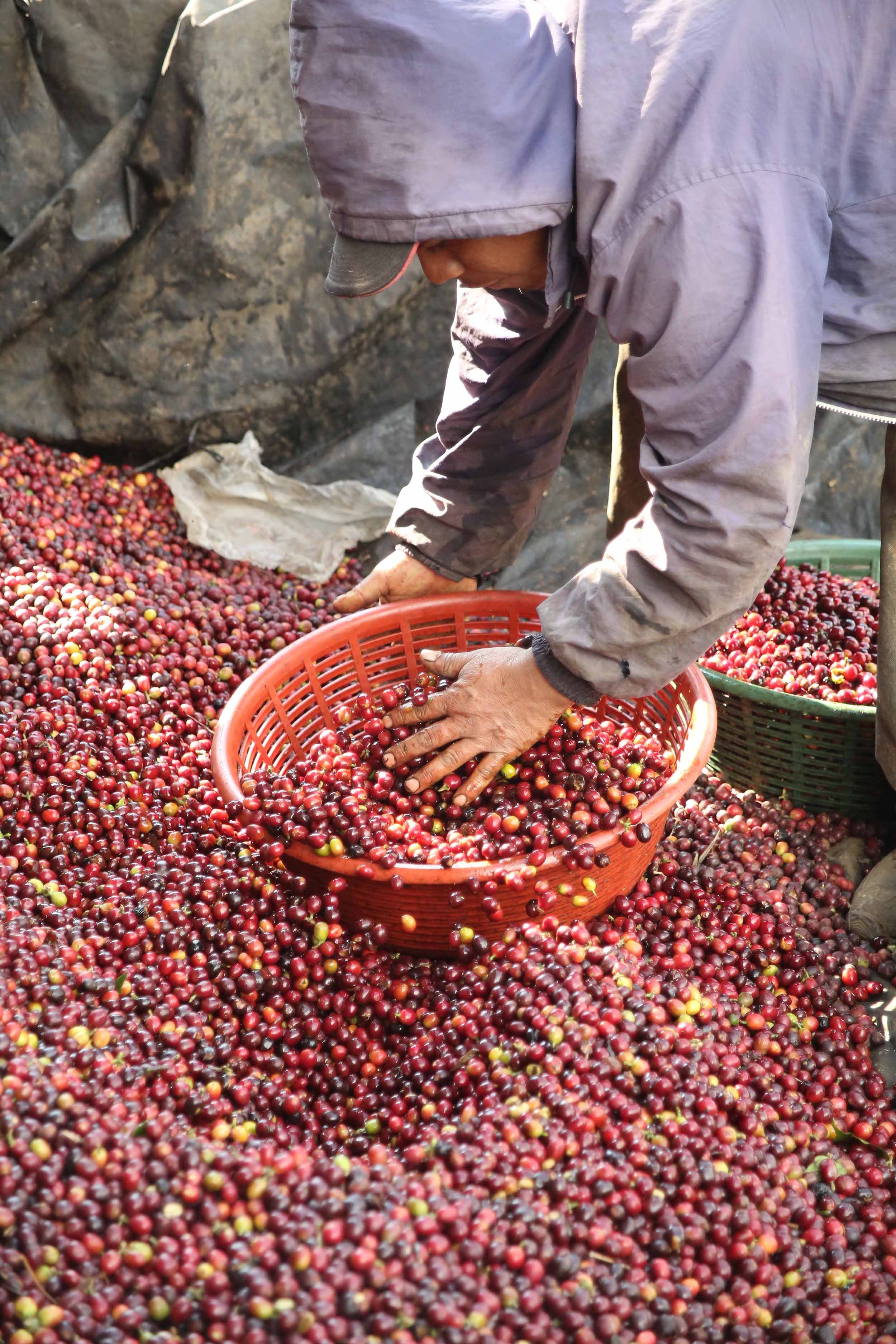
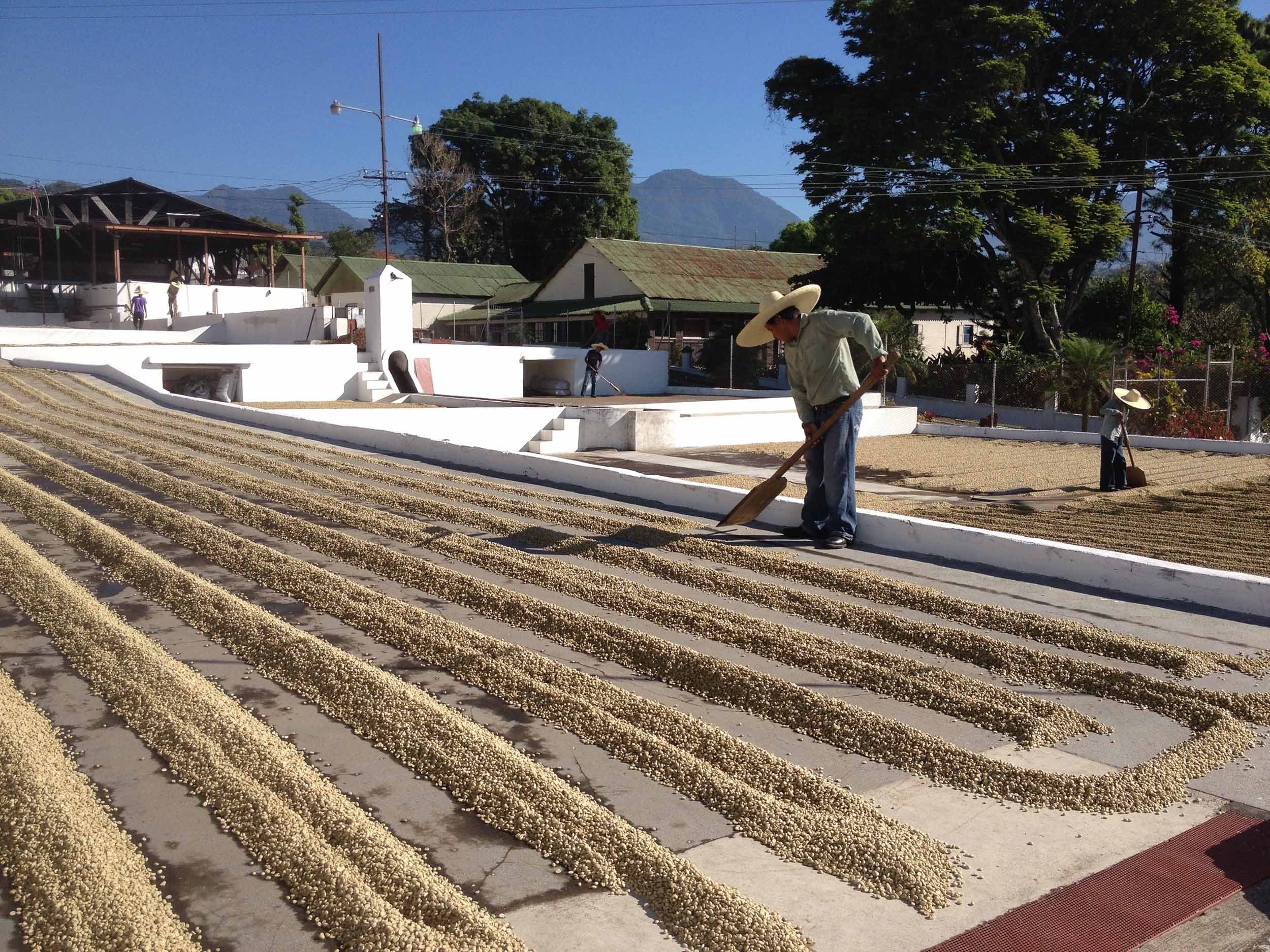
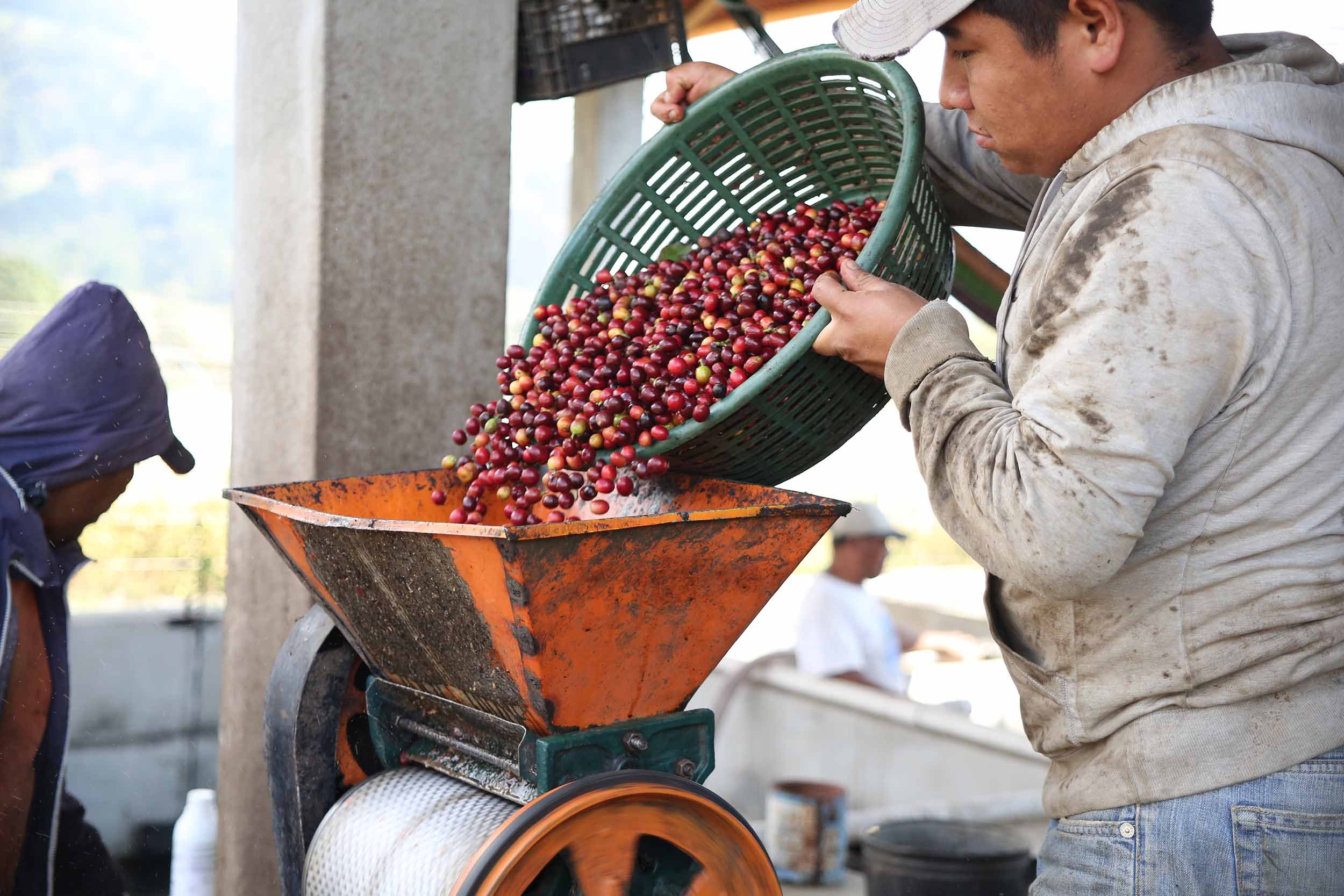
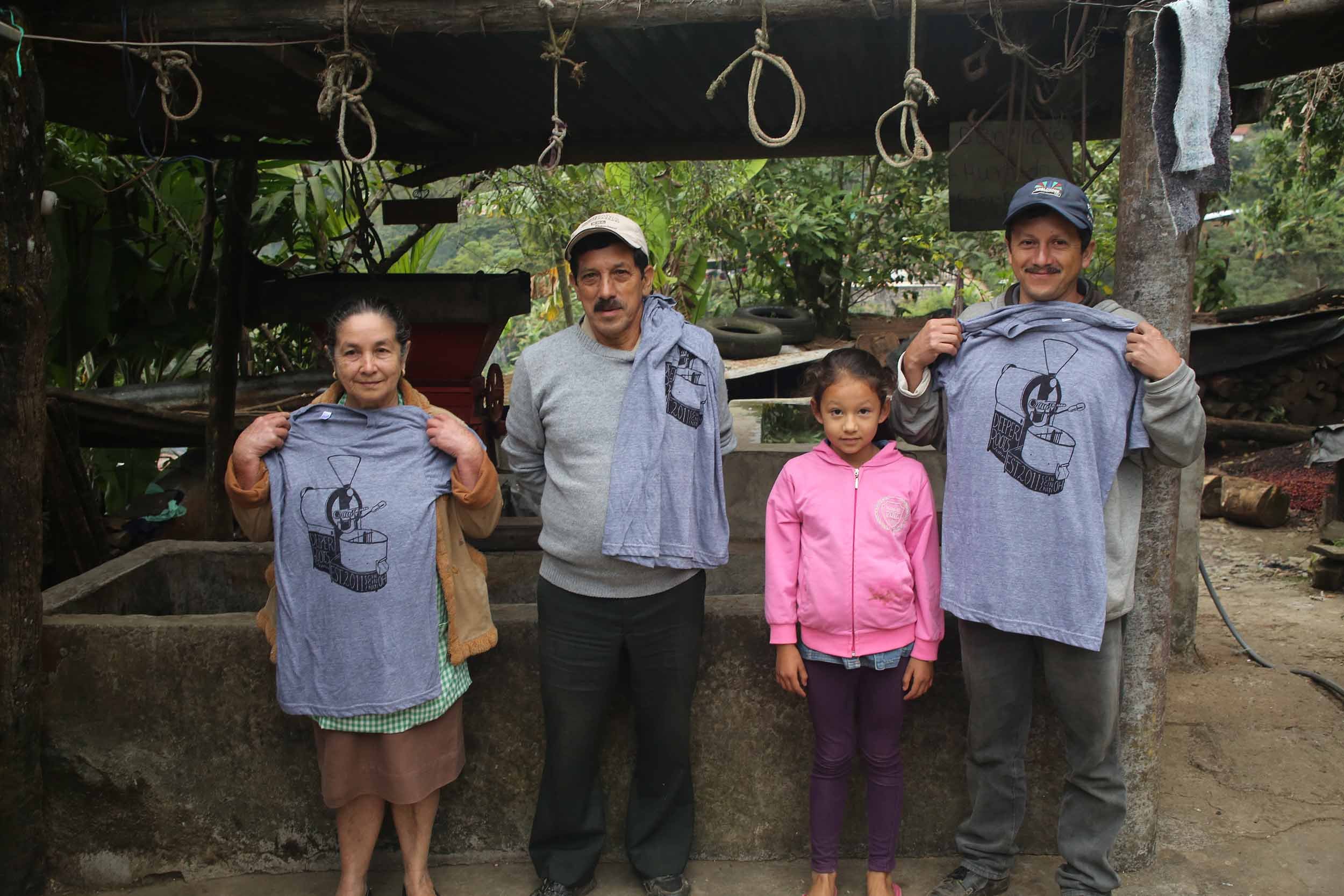
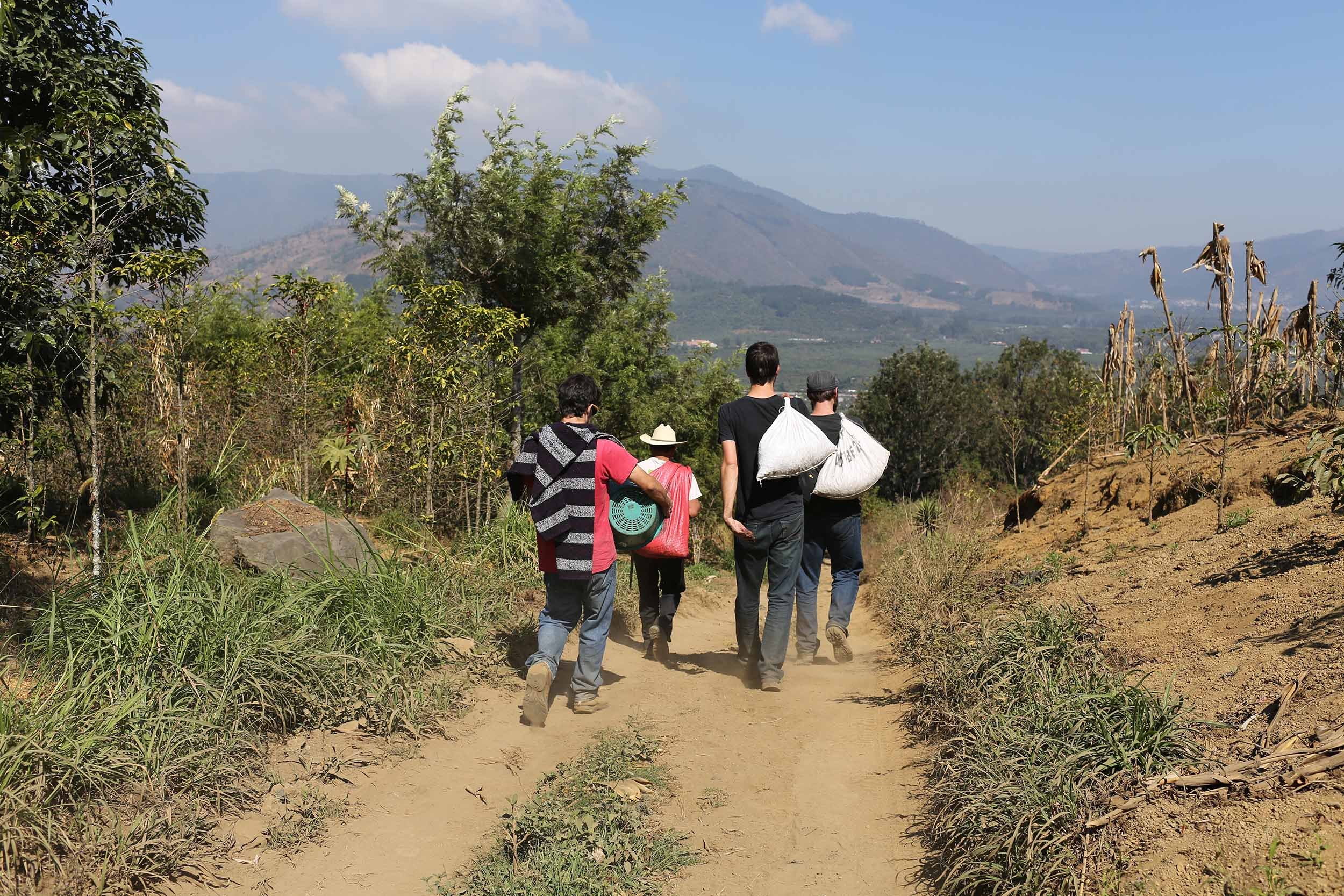
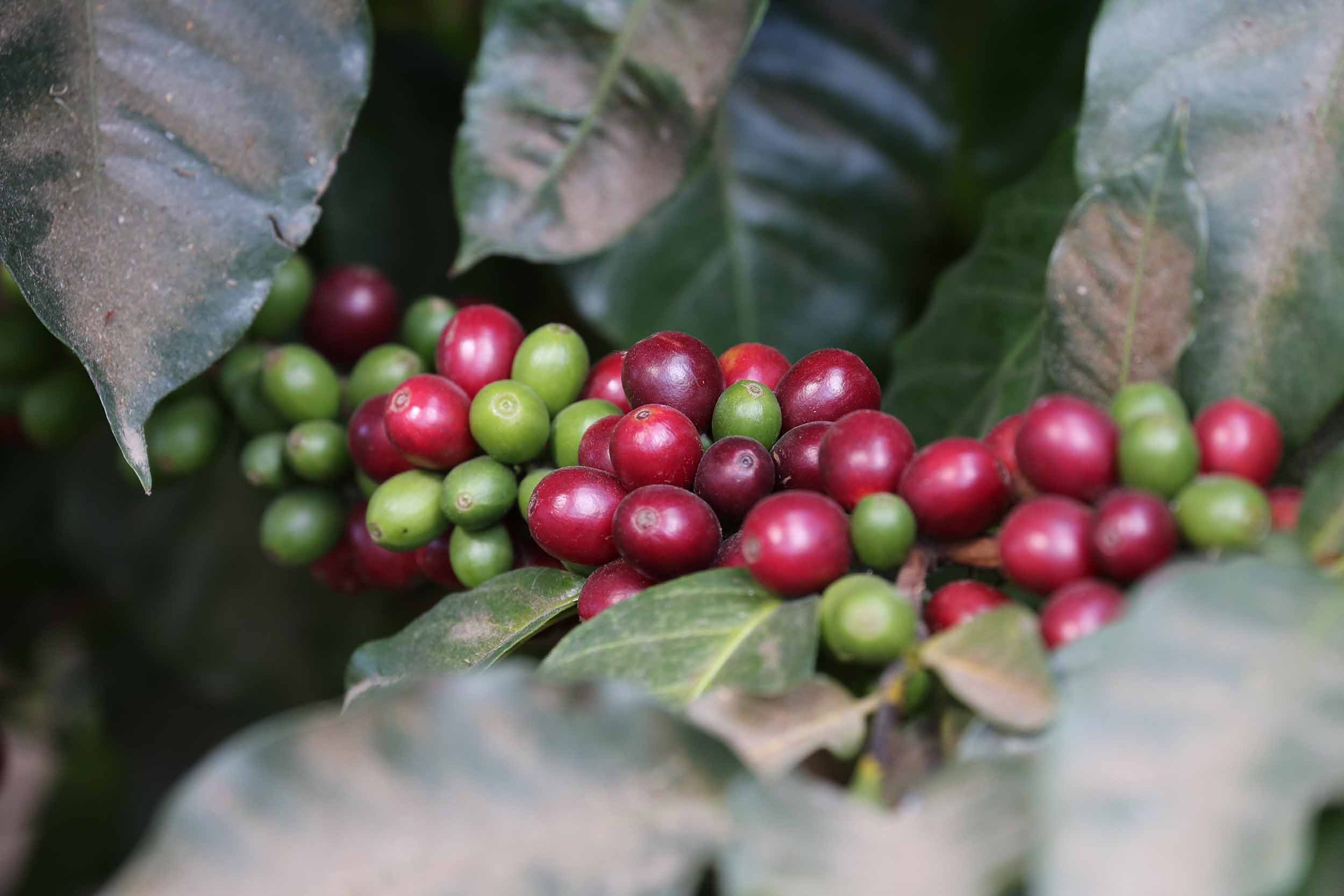

Who Grows It?
Although coffee is grown mostly in developing countries, production has a lot in common with American agriculture. Like wheat and corn, coffee prices are set on a fluctuating commodity market. Some coffee is grown on large-scale farms that tend to lean on fertilizers and other inputs to maximize yield. The rest—approximately 70% of the world’s supply—is grown by small-scale farmers, many of them poor, who have relied on coffee for income for generations.
Like American family farmers, small coffee farmers face hurdles in keeping up in a global market. For a farmer with an acre or two of coffee plants and little access to credit, a drop in the market, a crop disease outbreak, or just a poor season’s harvest can be devastating. It’s not surprising that the average age of a coffee farmer is rising and younger generations are deciding they don’t want to continue the family business.
“We need to do a better job of putting faces on the coffee and the fact that there are people’s livelihoods at stake,” says Justin Carabello, who owns Carabello Coffee, a roaster in Newport, KY, with his wife, Emily. Carabello is one of several roasters in the Cincinnati area who source some of their beans through “direct trade,” which means they work directly with a farm to set a price. “I’m visiting the farms, I’m choosing which coffees I want to buy with my importer,” he says. “We’re all working together to produce something good for everybody in the supply chain.”
La Terza Artisan Coffee Roasterie, which roasts and serves coffee in Fairfax buys some coffee directly from the El Porvenir Coffee Cooperative in Nicaragua. This community of 270 people has no electricity or telephone and jointly owns one vehicle, a 1972 Ford tractor. “The coffee they produce is incredible, and we pay a premium for that quality,” says Robert Mbabazi, LaTerza’s master roaster. “It feels good to know that the decisions we make here can really make impacts in people’s lives so far away. Producers who honor their land, harvest coffee using best practices, and are artisans in their own right don’t have to sell coffee to warehouses and have it blended.”
From the Ground Up
Les Stoneham, owner of Deeper Roots Coffee, has built a reputation for supporting the next generation of coffee farms and farmers. Through Deeper Roots Development, the nonprofit organization he founded in 2006, he has worked in the village of Santa Maria, Guatemala, to build infrastructure, train farmers, and market the high-quality coffee they produce to specialty roasters who are willing to pay more for a good product.
Stoneham says he started the Deeper Roots roasterie in 2011 and opened a café in Oakley in April to develop a Cincinnati market for the farms he was working with. “We can talk until we’re blue in the face about building quality and sustainability for the farmers, but unless we’re equally dedicated to building a sustainable customer base, there will be a ceiling that those farmers can reach,” he says.
Deeper Roots also sources coffee from larger farms that are producing coffee in environmentally friendly ways, like Fazenda Ambiental Fortaleza. This 800-hectare family farm in Brazil was inherited by a younger generation of non-farmers who had a new vision for the 150-year-old plantation. They transformed it into a sustainable model that supports environmental stewardship, profit-sharing for employees, and education for other coffee growers in the community.
“Viewing all coffee farmers as small, poor farmers is limiting our view of what sustainability for a lot of farmers means,” Stoneham says. “A lot of farmers have a lot of resources and they can very easily go the route of commodity, build more production, cut down more trees, and use more chemicals. Or, they can approach sustainability with methods that focus on diversity and quality and organic.”
Trading Up
Coffee Emporium, which started in 1973, was the first roaster in Cincinnati to buy directly from a coffee farmer. In 1975, a Costa Rican farmer came to the former owners’ doorstep in a VW van loaded with beans. Tausch, who bought the business in 1996 with his wife, Eileen Schwab, inherited the relationship and still buys from Hacienda La Mineda today.
“With the advent of the internet, it’s made direct trade much easier,” says Tausch, who also buys coffee from women-owned farms associated with the International Women’s Coffee Alliance, an organization that empowers women to take leadership roles in the coffee industry. “Now I can call Olga from Finca Los Andes in Guatemala on my cell phone. We’re friends on Facebook, and we can Skype with them. Our employees can talk to them and get a better idea of what’s going on.”
For customers who want to know where their coffee dollars are going, traceability is important, and roasters know that. But the logistics and economics of buying directly from farmers aren’t feasible for an entire small roaster’s supply; for a portion, they must rely on importers. “We work with importers who are just as interested as we are in having direct, long-term, sustainable relationships,” Stoneham says. “They help us partner with small farms and navigate the supply chain to keep the traceability of a small lot of coffee.”
For coffee drinkers who want to learn more about where their morning joe is coming from, all the roasters we talked to are more than willing to share their knowledge. Most offer opportunities to learn about coffee through “cuppings,” or tastings. Carabello, who donates a portion of his company’s profits to an orphanage near one of the Guatemalan farms he buys from, is working on organizing group trips to the area. “I want that sense of, ‘there is another person on the other side of this,’” he says. “We’re hoping to create that opportunity for people in a viable way.”
“Coffee is one of the most fun, interesting products to promote,” Stoneham says. “You’d be hard-pressed to find another industry where people care so much and want to see so much move forward.”
Coffee cherries are red when fully ripe, so farmers must repeatedly harvest their trees as new cherries are ready to be picked.
Coffee Talk
The coffee industry is buzzing with terminology and certifications that describe how the beans are grown and sold. To help cut through the jargon, here’s a guide to some terms you might find as you shop for coffee. Keep in mind that if a coffee isn’t certified, it doesn’t necessarily mean a producer isn’t trying to do the right things. Still confused? Talk to your roaster or barista. “Coffee roasters love being asked these questions,” Justin Carabello says.
Bird Friendly The strictest of the third-party environmental standards, this certification from the Smithsonian Migratory Bird Center means the coffee is shade grown and 100% organic.
Coffee Rust A disease that has devastated farms in Central America in recent years, this fungus attacks the leaves of coffee trees. Once infected, trees must be removed; it takes new trees two to three years to produce coffee. Many farmers can’t absorb the loss and have had to abandon coffee farming.
Direct Trade An unregulated term that describes buying green coffee directly from farms rather than through brokers. This method gives roasters a voice in how coffee is produced and more transparency in the supply chain for customers. It can also give farmers more security from season to season.
Fair Trade The Fair Trade certification guarantees farmers a minimum price, and links farmers directly with importers.
High Grown Arabica coffee grown at 2,000 feet or higher above sea level grows more slowly and produces a more dense bean with the potential for more complex, sweet flavor.
Organic For coffee to be labeled 'organic' in the U.S., producers cannot use synthetic substances such as most pesticides, herbicides, and fertilizers, and at least 95% of the beans must have been grown under these conditions. Some coffee from small farmers is “de facto” organic but not officially certified because of the costs involved in certification.
Rainforest Alliance Certified This certification means the producer meets environmental, social, and economic criteria designed to protect biodiversity, deliver financial benefits to farmers, and foster a culture of respect for workers and local communities.
Shade Grown Shade-grown coffee prevents soil erosion and encourages biodiversity, which can reduce and keep pests and invasive species at bay with less chemical inputs. It also provides habitat for migratory birds and other wildlife.
Amy is a freelance writer and content strategist with an interest in sustainability, food, and wellness. After 12 years of apartment living in Brooklyn, NY, she's enjoying having space to learn how to grow food in a community garden plot here in Cincinnati. She blogs regularly about sustainability for the nonprofit Sustainable America.



